Sometimes you have to go see a movie you know you’re going to dislike. Just to make sure. And because everyone is talking about it and you don’t want to be left out of the pop culture moment. Maybe you’ll even be pleasantly surprised. Perhaps you’ll have a mixed opinion of your own. That’s the thing about movies; there’s some objectivity regarding cinematic craft but enjoyment is subjective, and coming to the easy conclusion that a work of cinema is either good or bad is both lazy and a lie.
Most movies can be a little bit of column A and a little bit of column B. Joker is an example of one that falls pretty balanced between the two as a good movie with a lot of bad or a bad movie with a lot of good. Even if you think it’s not worth talking about, that makes it worth talking about. And as always, if it leads viewers back through its roots to some truly essential films, there’s some value in that. Joker wears a lot of its influences on its sleeve, which makes the journey easy to navigate.
Below is a list of movies that are necessary to watch after the DC villain showcase. They include the works that obviously informed its plot and characters as well as some titles that are directly referenced on screen.
The Man Who Laughs (1928)

For this week’s Movies to Watch After… I’m going back to the old chronological format of starting with the earliest recommendation. This is mainly because Joker co-writer/director Todd Phillips says to begin at the beginning when it comes to the films that led to his latest. In an interview with IGN, the filmmaker explicitly cites this among the movies he and co-writer Scott Silver drew from, and he claims it was a coincidence that it happens to be an original inspiration for the Joker character.
“I think you have to start with ‘The Man Who Laughs,’ which is a silent film that really was a huge inspiration for us and oddly was a huge inspiration for the original creators of Joker, which we didn’t even know, believe it or not, as silly as that sounds. At the time we were like, let’s look at that.”
This adaptation of Victor Hugo’s 1869 novel is indeed famously credited with inspiring the creation of the Joker for the comics in 1940, even if it was only a photograph of actor Conrad Veidt as the title character that informed the Batman villain’s look. The film is about Gwynplaine, aka “The Laughing Man,” a carnival performer with a permanent smile caused by a disfigurement he’s given as a child. The physical scar is more linked with Heath Ledger’s Joker in The Dark Knight but the story fits Joker.
Gwynplaine is a poor, clown-like professional who is secretly the child of a wealthy political figure. Similar to how Arthur Fleck in Joker is a poor professional clown who learns (even if it’s not correct) that he’s the illegitimate son of the rich mayoral candidate Thomas Wayne. There’s also another clown in each story who does harm to the main character, but in both the “hero” still lives happily ever after in the end, unlike Hugo’s version of The Man Who Laughs, in which Gwynplaine dies.
Buy The Man Who Laughs on Blu-ray from Amazon.
Modern Times (1936)
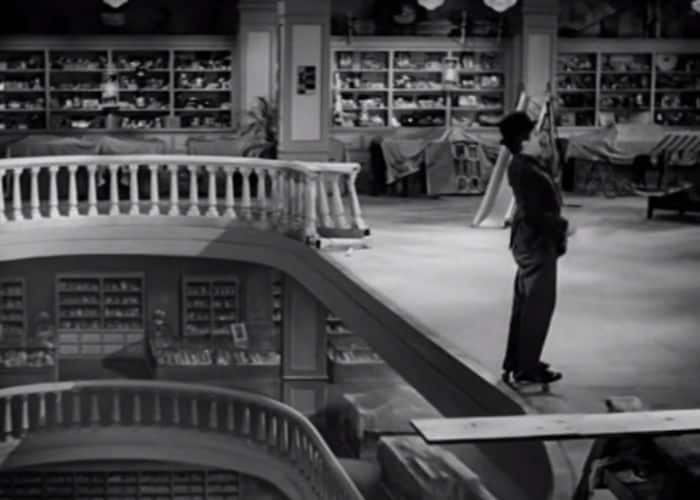
From silent melodrama-horror to the most iconic silent comedian. Charlie Chaplin‘s Modern Times, however, is not quite a silent film, though it’s not really a talkie either, as was initially planned. Produced years after sound cinema became the norm, this comedy features some synchronized audio yet is mostly dialogue-free. Chaplin’s famous Little Tramp character, introduced more than 20 years earlier, is an out-of-time hero trying to fit into a modern industrial society. Phillips says of the movie:
“I think you’d have to watch ‘Modern Times’ because we believe there is some Chaplin in Arthur [Fleck] that I think is really important.”
Modern Times isn’t just an influence on Joker. It’s actually referenced within the movie. The scene in which Arthur confronts Thomas Wayne about his being the millionaire’s son happens at a theater showing the Chaplin classic. We even see Arthur catch the famous roller skating bit from Modern Times onscreen while posing as an usher. Ironically, that’s probably the most effects-driven bit of cinema in this whole “superhero movie.” It’s a neat trick to learn about, by the way.

Stream Modern Times on The Criterion Channel.
Shall We Dance (1937)

Another film we actually see some of in Joker, albeit not explicitly recognized, is Shall We Dance. The scene from the musical that appears on the Flecks’ television is actually a good follow-up to Modern Times since it begins with workers toiling in the engine room of an ocean liner as if they’re part of the machine. Then they perform the famously mixed-race “Slap That Bass” number, which starts off with Dudley Dickerson singing the following lyrics that describe the context of Joker:
The world is in a mess
With politics and taxes
And people grinding axes
There’s no happiness
The song is about rhythm and music chasing misery away. Arthur does seem his happiest when thinking of a happy tune and dancing about, especially while committing violence. But does the overall plot of Shall We Dance have any relevance? Sort of. Fred Astaire plays a kind of old-fashioned incel in love with a woman (Ginger Rogers) who isn’t that into him. There’s an illusion constructed of them being together, though, and also a scene in which many people are wearing masks with the face of another. But it’s Rogers’ face, not his own, because Astaire decides since he can’t have her that he’ll make others look like her.
Rent Shall We Dance? from Amazon.
Dog Day Afternoon (1975)

Phillips and Silver, as well as cinematographer Lawrence Sher, watched a lot of gritty New York City movies from the 1970s and early 1980s in preparation for making Joker. They wanted that grimy, crime-ridden period to evoke the films of that time, with particular focus on the works of Martin Scorsese (who was once tied to Joker as a potential executive producer) and Sidney Lumet. The latter’s Serpico was named in Phillips’ pitch to Warner Bros. as a model for the idea of a character-driven crime film version the Joker’s story, and his Dog Day Afternoon is cited in the IGN interview as an influence:
“Because of how the antiheroes become embraced.”
Other ’70s movies that informed Joker include Lumet’s Network, which is reflected in the television-set climax of Arthur’s violent appearance on Live with Murray Franklin, and Milos Forman’s mental hospital-set Once Flew Over the Cuckoo’s Nest. But as he notes in that quote above, Dog Day Afternoon is key, even if this isn’t the Joker movie in which the character robs a bank. It’s the way he riles up the people despite being a criminal, much like Al Pacino’s character, who is based on a real person, does for the crowd outside the place he’s hijacked.
Rent Dog Day Afternoon from Amazon.
Zorro, The Gay Blade (1981)
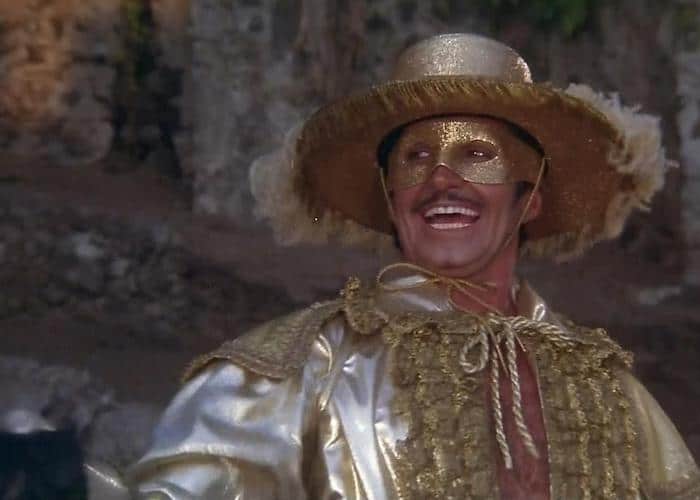
There are many reasons why Joker is set in a certain era, but the fact that it takes place specifically in the summer of 1981 almost seems like an excuse for the appearance of this movie title on a marquee. In DC Comics continuity, the 1940 movie The Mark of Zorro is what young Bruce Wayne and his parents went to see the night Thomas and Martha Wayne were murdered. That’s significant because Zorro is a kind of proto-superhero as a masked vigilante pulp hero.
Other versions of The Mark of Zorro, including a 1920 silent adaptation, have been referenced in Batman’s origin in the comics and movies throughout the years, but the Zorro character, in general, is accepted as a model for the Caped Crusader in the same way Gwynplaine influenced the Joker. Zorro, The Gay Blade is officially a comedic sequel to The Mark of Zorro starring George Hamilton as both of the twin sons of the original titular swashbuckling hero as they each take up the costumed alter ego in their own ways. As much as we’d all wish Blow Out or Excalibur, which are also advertised as showing at the same theater, this silly Zorro movie makes more canonical sense.
Buy Zorro, The Gay Blade on DVD from Amazon.
The King of Comedy (1982)
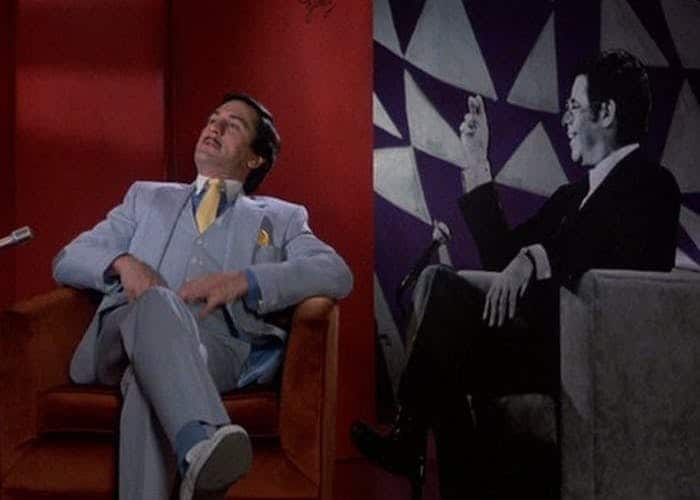
Does this one really need to be recognized here? Yes, because even if the connection between The King of Comedy and Joker is obvious and widely known, I’m not going to not recommend it. This isn’t the only Scorsese movie that influenced Joker — there’s also Mean Streets, Raging Bull, and Taxi Driver, the last of which surely inspired the scene in which Arthur is planning his talk show suicide with its iconic “You Talkin’ to Me?” bit.
The King of Comedy, though, is almost remade in whole as Joker. Both movies are about aspiring stand-up comedians who have fantasies — that we’re shown depicted — of appearing on a certain talk show. And then the antihero protagonists go so far as to do harm to the host of that talk show. In Joker, Arthur is booked on the show and then murders Murray Franklin — who is winkingly played by Robert De Niro, who portrays the main character in The King of Comedy who kidnaps that movie’s host (Jerry Lewis) for the “ransom” of being booked on the show. Both movies also hint that everything was all in the guy’s head.
Here’s Phillips on the link between the movies as told to IGN:
“It’s not a big stretch to remake ‘The King of Comedy,’ directly, with the Joker in the lead role. It’s the story of a man who can no longer tell fantasy from reality, whose delusions have disturbing consequences. And although director Martin Scorsese knows that Pupkin is a terrifying person, he and De Niro never lose sight of the fact that his actions are the result of a tragically disturbed mind. Pupkin’s comedy routine, which we finally see at the end of the film, is a litany of tragic abuses he suffered as a child, filtered through a mind that is desperate to share them with the world and to say that, in the end, all that horror was hilarious.”
Rent The King of Comedy on Amazon.
The Fisher King (1991)
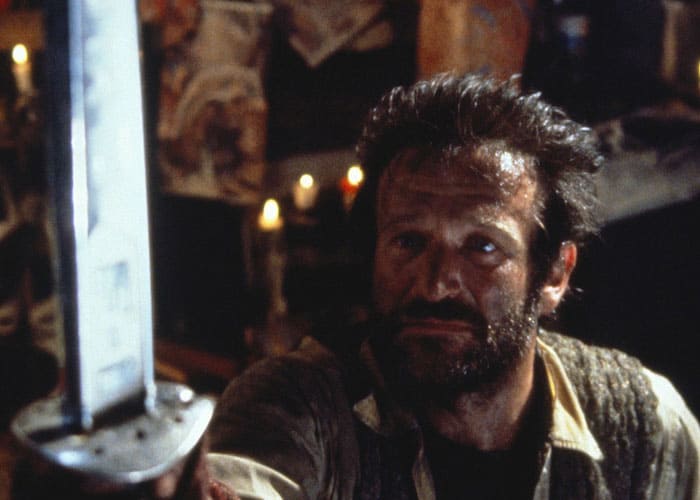
A lot of critics have referenced A Clockwork Orange as a related movie, and maybe Phillips has cited that one before, too. Stanley Kubrick’s adaptation of Anthony Burgess’ sci-fi novel about a violent gang leader who goes through experimental therapy does have its antihero dancing around to a show tune while performing his awful deeds, and Arthur’s way of cavorting about to Frank Sinatra’s “That’s Life” is certainly reminiscent of that. Cross that with Taxi Driver‘s protagonist who is fed up with the dirty streets of ’70s NYC, and you’ve got the Joker of Joker.
But I’m instead recommending something that came out 20 years after Clockwork and 15 years after Taxi Driver. One of the best films of the ’90s, Terry Gilliam’s The Fisher King, written by Richard LaGravenese, arrived at the tail end of the gritty era of the Big Apple, just before the city was cleaned up, for better and worse. The movie stars Robin Williams as a former yuppie professor whose wife is gunned down by an incel after being provoked by a shock jock (Jeff Bridges). As a result of the trauma, he becomes a delusional homeless man who moonlights as a vigilante knight. He’s kind of Phoenix’s Joker plus Batman wrapped up in one, but wackier. His Sinatra show tune of choice to sing while kicking hooligans’ butts: “How About You?”
Stream The Fisher King on Crackle.
You Were Never Really Here (2017)

Why is Phoenix getting so much attention, including Oscar buzz, for Joker, when he deserved it much more for You Were Never Really Here? And why is that movie making so much money and this made so little? Because Lynne Ramsey’s arthouse crime drama is not tied to a popular comic book franchise, duh. But if you wish Joker didn’t have to be a DC movie with all its Batman and the Joker and Gotham City lore, then You Were Never Really Here is the perfect thing for you.
Here, Phoenix plays a disturbed rescuer of trafficked girls who continues his work as an antihero vigilante after his paying job is corrupted. His background of abuse and his current residence with his mother is similar. His way of thinking of committing suicide by blowing his brains out with a revolver underneath his chin is similar. But as teased in a brief montage of Phoenix’s roles over the decades made by Birth.Movies.Death, a lot of the actor’s work feels like a lead up to his portrayal of the Joker, especially those characters he plays in this and The Master. I even was reminded of Two Lovers at times while watching Joker. Just go back through Phoenix’s whole career and watch all of his movies.
Stream You Were Never Really Here on Amazon Prime Video.
A Dangerous Son (2018)
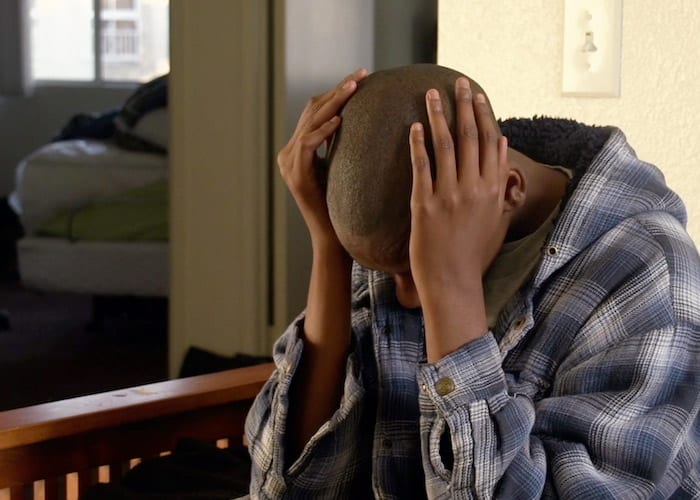
For this week’s documentary pick, I thought a lot about what sort of subject to focus on in relation to the Joker’s origin story. The movie seems to be about the issue of mental health not being enough of a concern in American society. Documentaries such as Titicut Follies actually helped stigmatize the insane asylum method of dealing with the mentally ill during a time when deinstitutionalization was already going on anyway and community-based programs were on the rise.
Other docs have dealt with how the resulting public mental health solutions that came about as an alternative have been defunded over the years, like what happens with Arthur’s psychiatric care in Joker. The most recent notable doc to address this problem and its link to a rise in gun violence in the US (specifically the Newtown and Aurora shootings, the latter of which his associated with the Joker character since it occurred during a showing of a Batman movie, The Dark Knight Rises) is Liz Garbus’ A Dangerous Son. The HBO original does this while focusing specifically on three families with children suffering from emotional or mental illness. The subjects are certainly much younger than the Joker, but you can imagine little Arthur Fleck was like the kids seen here and required the sort of care they’re all in need of.
Stream A Dangerous Son via HBO.
The post Watch ‘Joker,’ Then Watch These Movies appeared first on Film School Rejects.


0 comments:
Post a Comment